In Depth Look @ Side 3
1. Birthday
Interview with Paul McCartney
With all the past pop culture revisionism going on, it’s easy to forget the Beatles’ basic rock ‘n’ roots. This was a formulated not on puffy psychedelia, bawdy British musical hall, or pure song craftsmanship (though they excelled at them all). No, the neophyte Fab Four found instant common ground as lovers of classic American icons—Elvis and Buddy Holly, Little Richard and the Everly Brothers. Whenever they needed to recharge their creative batteries, so to speak, they returned to the raw, unbridled energy of the sounds that inspired their adolescent affections.
With all the past pop culture revisionism going on, it’s easy to forget the Beatles’ basic rock ‘n’ roots. This was a formulated not on puffy psychedelia, bawdy British musical hall, or pure song craftsmanship (though they excelled at them all). No, the neophyte Fab Four found instant common ground as lovers of classic American icons—Elvis and Buddy Holly, Little Richard and the Everly Brothers. Whenever they needed to recharge their creative batteries, so to speak, they returned to the raw, unbridled energy of the sounds that inspired their adolescent affections.
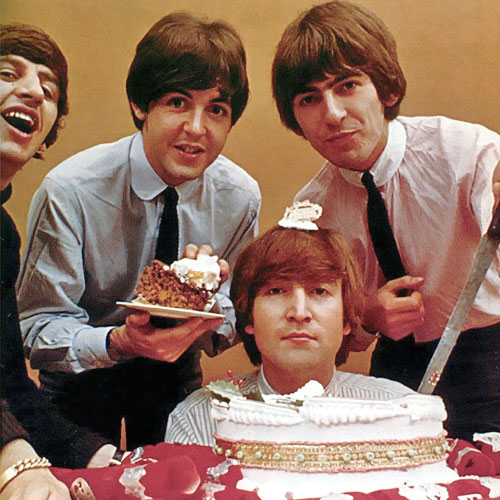
McCartney would later admit that he “borrowed” a bit of his favorite ‘50s rave-ups to craft this simplistic sing-along. But there is much more to “Birthday” than a backward “Lucille” with a splash of “(Oh) Pretty Woman”.
“Birthday” may have been meant as a big, brassy group hug—even current gal pals Yoko Ono and Patti Harrison sang backup, a first for the all-boy —but there is something somewhat sinister about Side Three’s opening track. It’s a call out to party, but at the same time, it suggests a quartet being forced into the position of host. One can just imagine the boys belting out the track, their animosities sidelined for the time being in to create a new rock ‘n’ take on a creaky old standard. Rumor has it that the Beatles halted rehearsals on the song so that they could head back to McCartney’s and watch the Jayne Mansfield gem The Girl Can’t Help It. If one listens carefully, you can hear that film’s title tune peppered throughout “Birthday‘s“ basic blues progression.
The entire effort has the feeling of preplanned anarchy. The first thing you hear before sound even settles is Starr’s resilient drumming. After a fumbling fill that feels part well practiced and part improvised, the boys run in with their Penni-Orbison riff. It’s a memorable hook, but also one that appears incomplete. Like most of The Beatles, it has a tossed-off quality that countermands the group’s previous studio fastidiousness. Soon, McCartney is doing his best rockabilly howl, with some recognizable help from the superior shouter, Mr. Lennon. With its Moon/June/ lyricism further wicking away the complexity, we wind up with the world’s most famous pop artists playing jam .
But it’s the break where things get interesting—very interesting indeed. As Starr rocks steady and someone counts down the time, we learn of the imminent celebration. Voices mix and harmonies merge, once again bringing in the influences of the past. As an effects-laden guitar joins a treated piano as quasi harpsichord (more honky tonk, actually), McCartney’s voice bellows for the listener to “take a ch…ch…ch…chance” and “dance”. In between each stanza, a wistful, melancholic responsorial from the gala of the track’s title resembles the last breathy sigh of a dying ghost. Its inherent eeriness countermands the song’s sock hop sentiments. The freaky fade out of the treated keyboards further amplifies the sense of dread.
As a result, when “Birthday” comes bellowing out of your speakers (or in these post-modern technological times, your iPod), it more or less fails to remind one of a Bo Diddley date with Fats Domino and the rest of the roots revivalists. Instead, what the Beatles managed here was indicative of their entire career. Instead of copying other musicians, recreating their approach with student-like seriousness, they took the signature styles and made them wholly their own. This is Elvis as envisioned by his fans, except in this case, said devotees were geniuses of sound and structure. If they were sad that their take on the syrupy annual sentiment didn’t instantly replace the jerryrigged “Good Morning to You”, originally composed in 1893, they never showed it. Instead, “Birthday” remains the anthem for every proto-punk’s impending maturation. It signaled something very similar for its creators as well.
— Gibron
2. Yer Blues
Primary Songwriter: Lennon
For all that chatter about The Beatles predicting the members’ solo work, only two of its Lennon tracks would be of a piece with his Plastic Ono , arguably the defining post-Beatles disc. One is the muted, tender Julia; the other, the searing, spooky Yer Blues. It’s the only officially released Lennon-McCartney original to be christened a blues and strictly follow a 12-bar blues structure. Furthermore, while many Beatles songs grapple with death in some form (Run for Your Life, Eleanor Rigby), it’s the ’s only track to explicitly discuss suicide.
For all that chatter about The Beatles predicting the members’ solo work, only two of its Lennon tracks would be of a piece with his Plastic Ono , arguably the defining post-Beatles disc. One is the muted, tender Julia; the other, the searing, spooky Yer Blues. Yer Blues is the only officially released Lennon-McCartney original to be christened a blues, and one of few to strictly follow a 12-bar blues structure. Furthermore, while many Beatles songs grapple with death in some form (Run for Your Life, Eleanor Rigby), Yer Blues is the ’s only track to explicitly discuss suicide.
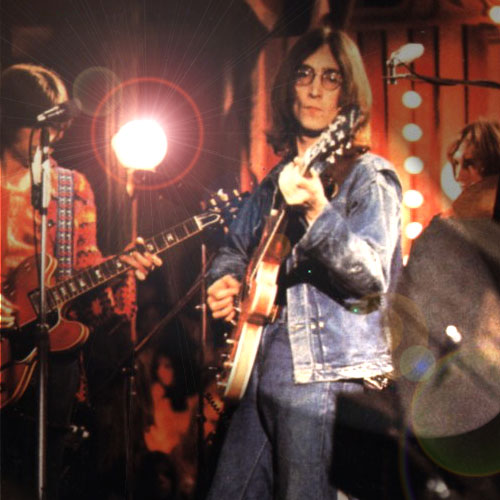
And why? Lennon never expresses “the reason why”, other than to contemptuously grunt, “Girl, you know the reason why.” But given that this is a man who, three tracks later, will feminize the Maharishi in to eviscerate him, who earlier in the album bitterly blamed some woman for his insomnia, whose entire oeuvre (and biography) is peppered with problematic gender interactions, he might as well be saying, “Girl, you are the reason why.” Following in the grand blues tradition of women doing wrong and leaving a man in pain often simply by leaving him, Lennon seethes in heartbreak. But his introspection (call it his utter self-absorption) turns the misdeed inward, and the song focuses on his reactions rather than whatever wrong she supposedly committed. This is not a revenge story, or an attack on an unfaithful woman. This is instead an attack on the man who, through some or many unspecified flaws, doomed himself to solitude. Typical of Lennon, the girl is a scapegoat but secondary, even irrelevant. Lennon is who matters here. Like many of his most personal compositions, “Yer Blues” bridges the roots of rock ‘n’ with the incipient singer-songwriter solipsism.
“Yer Blues” is, paradoxically, both ephemeral (like life) and eternal (like death). Its cyclical four minutes feel as though they could be drawn out and repeated ad infinitum; this is a song that some overindulgent rock could turn into a 20-minute opus, full of false endings and (hopefully) unexpected left turns. The track begins with a count-off in which two is the first audible number, and Lennon’s vocal starts with an authoritative “Yes, I’m lonely”, as if answering a question never posed. What follows is an in-the-moment snapshot of a shattered psyche, with few of the preceding details filled in. What brought him to this extreme state? Beyond some parental info (“My mother was of the sky / My father was of the earth“), little insight is offered or needed. The immediate feeling is more important, the spontaneous laments of a man who feels like a decomposing corpse, right down to the animals pecking away at his carcass.
With such a sparse lyrical base, “Yer Blues“‘s chief impact is musical. It is a fairly abrasive Beatles song, laced with feedback and white noise; after the psychedelia of 1967, it is refreshingly raw and tough, perhaps influenced by the electrified blues of bands like Cream, and sonically not that far removed from the blues-based hard rock that Led Zeppelin would perfect a year later. The song actually sounds like the death its singer anticipates. Lennon’s vocal is throat-shreddingly intense—when he asserts “I am of the universe, AND YOU KNOW WHAT IT’S WORTH”, the Nietzschean despair in his scream suggests it’s worth nothing. Being of the universe is scant consolation, nor is his lifeblood—Lennon identifies with Dylan’s notoriously square Mr. Jones, the purported antithesis of rock ‘n’ cool, and even fails to provide solace. In fact, once he confesses that he “feel[s] so suicidal, EVEN HATE MY ROCK ‘N’ ”, the slow, foreboding 12/8 blues speeds up into a juke joint shuffle, from which Lennon quickly retreats—leaving a frantic, blood-rushing jam that conjures an injurious adrenaline rush, capped with a weeping guitar solo that sounds like bleeding.
He never fully returns; when the song reverts back to the initial tempo, Lennon’s vocal is off-mic, a buried echo, the final whimpers of a man about to transcend this earthly plane. He is fading, and the is about to fade with him, leaving an ultimately unsettling message: a man will disappear, and eventually so shall his creations. A message that, 40 years later, “Yer Blues” has successfully refuted.
—Charles Hohman
3. Mother Nature’s Son
Primary Songwriter: McCartney
By 1968, folk-rock had become a well-established notion. Bob Dylan embodied it a number of different ways while hybrids of pop and old-world Anglo-Saxon swirled about the British scene in the form of Fairport Convention and the Pentangle. The Beatles’ folk-rock tracks on the White Album certainly reflected all of this while looking directly toward the upcoming singer-songwriter movement. To put the songs into that latter context, though, feels a bit like saying Keats’ odes foretold the dime novel craze more than a half-century before it began.
By 1968, folk rock had become a well-established notion. Bob Dylan embodied it a number of different ways while hybrids of pop and old-world Anglo-Saxon swirled about the British scene in the form of Fairport Convention and the Pentangle. The Beatles’ folk-rock tracks on the White Album certainly reflected all of this while looking directly toward the upcoming singer-songwriter movement. To put the songs into that latter context, though, feels a bit like saying Keats’ odes foretold the dime novel craze.
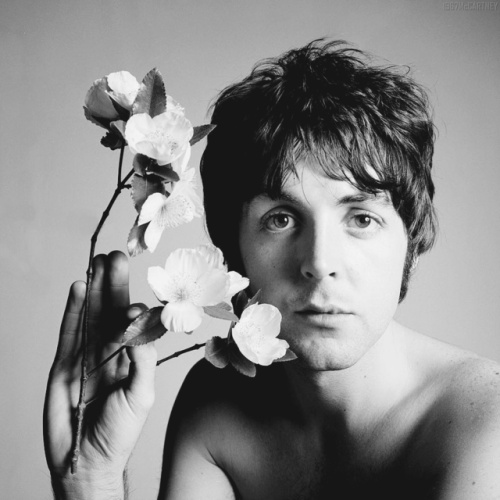
This is not only because they distinguished themselves through inventive guitar playing, crafty chord sequences, and melody to spare, but they were also such singular performances. Blackbird and Julia, for example, seem like pieces simple enough for the everyman to sing and play, but you’ll never hear them at a campfire—they’re just too complex as compositions and self-contained as recordings.
Mother Nature’s Son is another one of these and it’s a standout. McCartney wrote the song during the group’s summer with the Maharishi Mahesh Yogi, whose lecturing about nature had inspired both McCartney and Lennon to write one song each. Lennon’s Child of Nature eventually morphed into Jealous Guy, which appeared on his 1971 LP, Imagine (hear the early demos on bootlegs like The Alternate White Album). McCartney’s Mother Nature’s Son, of course, flourished into the fully realized pantheist hymn that appeared on side three of The Beatles. It’s an utterly simple, almost inconceivably beautiful track. Acoustic guitars trickle playfully like the streams he sings about. horns echo throughout ancient hills, while solitary drums rumble over distant, grassy peaks.
Listen to the pretty sound of as she flies, sings McCartney, who’s at once as sweet and melancholy as he’d ever sound. These contradictory qualities lend the track so much of its unique atmosphere. Beatles histories like Mark Lewisohn’s Complete Beatles Recording Sessions, of course, have told us that intra-moptop tension characterized this album’s late summer/early fall studio dates. Here’s Ken Scott about Mother Nature’s Son: “Paul was downstairs going through the arrangement with George and the brass players. Everything was great, everyone was in great spirits. It felt really good. Suddenly, halfway through, John and Ringo walked in and you could cut the atmosphere with a . An instant change. It was like that for ten minutes and then as soon as they left it felt great again. It was very bizarre.”
We can speculate endlessly on the reasons for the hard feelings, but we needn’t ever doubt their musical benefits. (Lennon and Starr were apparently working that day on Lennon’s nerve-rattling Yer Blues, which happens to precede Mother Nature’s Son on The Beatles and perpetuates forever the McCartney-as-softie conception.)
While singer-songwriters like Joni Mitchell and Paul Simon, among others, could certainly rival the Beatles in the sophisticated folk-rock department, none of that ilk could match their ability to sound so effortless and simple. And John , nowhere near their level on any count, turned Mother Nature’s Son into a live staple during the ‘70s by bypassing the song’s more complex and melancholy layers altogether. Such is the pastoral elegance of the Beatles’ original recording of Mother Nature’s Son that nothing calling itself folk, folk-rock, or any other such thing, has ever epitomized the oft-recurring nature’s child motif to the same degree before or since.
—Kim Simpson
4. Everybody’s Got Something to Hide Except Me and My
Primary Songwriter: Lennon
The recording of Everybody’s Got Something to Hide Except Me and My can be seen as the moment when Lennon-McCartney turned into Lennon-Ono. To shamelessly mix metaphors, if the was Paul, then the was Yoko. In June of 1968, Lennon’s affair with Ono was quickly overwhelming every aspect of his life, including his marriage with Cynthia Lennon. The other marriage in Lennon’s life, his songwriting collaboration with McCartney, was also in shambles. The days of sitting in the same room finishing each other’s songs were over.
The recording of Everybody’s Got Something to Hide Except Me and My can be seen as the moment when Lennon-McCartney turned into Lennon-Ono. To shamelessly mix metaphors, if the was Paul, then the was Yoko. In June of 1968, Lennon’s affair with Ono was quickly overwhelming every aspect of his life, including his marriage with Cynthia Lennon. The other marriage in Lennon’s life, his songwriting collaboration with McCartney, was also in shambles. The days of sitting in the same room finishing each other’s songs were over.
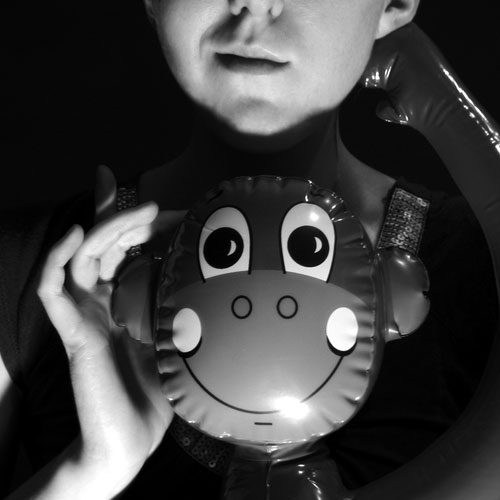
Ono quite literally moved into Beatle territory by becoming the first outsider ever allowed in the studio. It’s important to note the double meaning of the titular “”. 1968 was the year Lennon and Ono descended into heroin abuse, at once isolating Lennon from his bandmates and solidifying his bond with Ono. This on the back showed up in the lyrics (“the higher you , the deeper you go”). As Bob states in his landmark biography, The Beatles, the new level of drug use “manifested itself in John’s adversity and craziness, but the underlying influence had also crept insidiously into the songs”.
Adversity and craziness are two words that could easily sum up the manic freakout that is Me and My . One can hear a sense of urgency in Lennon’s pleas to “come on” and “take it easy”. Lyrically, it’s a defensive crouch that begs for empathy. The only hitch, of course, was Lennon wouldn’t return the favor for any of his bandmates. He had imploded his life from many to Ono and was angry that anyone would question his motives. As Lennon himself later said, “Everybody seemed to be paranoid except for us two, who were in the glow of love.”
But for all the turmoil, the song never loses its joyful sense of abandonment. A spaz-out of the highest , Me and My jettisons all limits in a maze of ringing bells, racing blues, and shouted come-ons. In other words, it’s Chuck Berry on crack.
Furthermore, though it might not have the typical makings of one, Me and My feels like a punk song. It is aggressive and urgent with a lack of self-consciousness. Sounds like a description for the Ramones. Just another genre in which Lennon’s influence can be heard.
As if it needed more help, Me and My also stands out for its track placement. Sequenced between McCartney’s pastoral Mother Nature’s Son and the lilting Lennon ditty that follows, Sexy Sadie, Me and My juts out like the markings of a polygraph during an egregious lie. It is a true WTF? moment. Love Me Do this ain’t.
In his selfishness and defiance, Lennon created a track for those who complain the Beatles don’t rock enough. It’s useful to view Me and My as a companion piece with McCartney’s Helter Skelter. Where Lennon goes weird, McCartney goes foreboding, in effect producing a funhouse mirror image of finger-blister freakouts.
(Further Listening: The blues-boogie version Fats Domino(!) recorded in 1970. It’s a great insight into Lennon’s songwriting prowess. Even in the most frenetic of songs, he provided a song structure to batten down the hatch.)
—Tim Slowikowski
5. Sexy Sadie
Primary Songwriter: Lennon
THINGS YOU MAY NOT KNOW ABOUT THIS SONG INCLUDE:
1. Lennon wrote this little kiss-off as he was packing to leave India in late spring, 1968, upset over his discovery that the Maharishi had made a pass at one of the women in the Beatles’ entourage.
2. Charles Manson thought that the song had been written about one of his followers, the whacked-out soon-to-be-murderer Susan Atkins, since he had nicknamed her Sadie Mae Glutz before the song came out! (The logic is impressively lysergic on this one, no?)
1. Lennon wrote this little kiss-off as he was packing to leave India in late spring, 1968, upset over his discovery that the Maharishi had made a pass at one of the women in the Beatles’ entourage.
2. Charles Manson thought that the song had been written about one of his followers, the whacked-out soon-to-be-murderer Susan Atkins, since he had nicknamed her Sadie Mae Glutz before the song came out! (The logic is impressively lysergic on this one, no?)
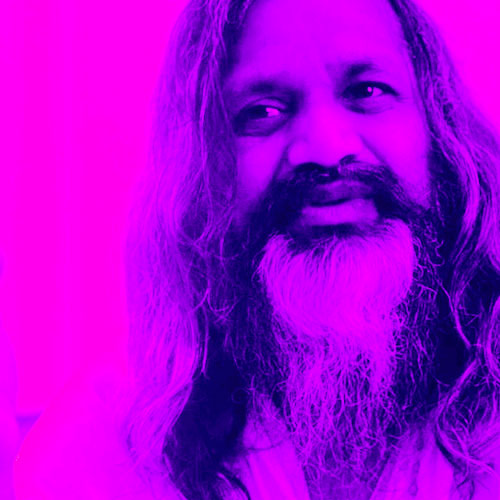
3. This was one of my favorite songs for a couple of months when I was 12, and also again when I was 17. It is not even my favorite Beatles song now.
4. Lennon’s first attempt at the lyrics was outstandingly straightforward in its anger and bitterness: “You little twat! Who the fuck do you think you are? Who the fuck do you think you are? Oh, you cunt!” These lyrics were eventually softened to “Maharishi, what have you done? You made a fool of everyone.” Improvement?
5. When I first heard Radiohead’s “Karma ” I thought it was a rip-off of “Sexy Sadie”, and then Thom Yorke told people that it sort of was. I still don’t know how to feel about this.
6. Harrison persuaded Lennon to change the lyrics after they got home from India because he found them to be offensive (and he wasn’t talking about the swearing! He was talking about using the name Maharishi—he suggested “Sexy Sadie” instead). So, instead of this being a song about the crushing disillusionment Lennon felt at seeing his idol revealed to be a false prophet, it ended up sounding like a mean-spirited jab at a loose woman. See point #3.
7. Back at Abbey Studios, Lennon scrawled the lyrics onto a piece of wood for some reason (which reason I’m guessing was drug-related, since these were the fucking Beatles, so you’d think he could have found paper and maybe even a pen if he’d wanted to) and this piece of wood was sold recently at auction by Starr’s one-time wife Maureen. For a lot of dough.
8. The woman that the Maharishi made the pass at was not Mia Farrow.
9. I actually know someone (I am not making this up) who tried to lose his virginity to “Sexy Sadie”, but was detained, reasons unclear, on the way to the, you know, forum, and he ended up having what was already bound to be an awkward and anxious first-time sexual experience to the cacophonic dissonance of “Helter Skelter”. Burn.
10. At one point during recording, the song had been clocking in at eight minutes. See point #9. He just might have made it.
—Stuart Henderson
6. Helter Skelter
Primary Songwriter: McCartney
Having written such popular mellow tracks like “Yesterday”, “Michelle”, and “Blackbird”, it was often assumed by casual listeners that McCartney played the rosy-eyed sap to Lennon’s rocker persona. On the contrary, not only did Macca possess the best pure rock ‘n’ voice in the , but he was responsible for some of the Beatles’ most ferocious tunes, from “I’m Down” to “Why Don’t We Do It in the ?” to the mother of them all, “Helter Skelter”. Of course, venturing into the heavier side of rock was never exactly the Beatles’ forte, especially in 1968 when after continued to push the envelope, but that didn’t mean they weren’t up for a challenge.
After a Pete Townshend quote in which the guitarist boasted about the rawness of the Who’s “I Can See for Miles”, McCartney, in an inspired moment of “if they can do that why can’t we?”, penned a track that would prove to be every bit as primal, potent, and loud as not only the Who, but Jimi Hendrix, Cream, Blue Cheer, Vanilla Fudge, and White Light/White Heat-era Velvet Underground as well. Yet again, it was proof that these four astonishingly versatile musicians were capable of anything.
We got the engineers and George Martin to hike up the drum sound and really get it as loud and horrible as it could and we played it and said, ‘No, it still sounds too safe, it’s got to get louder and dirtier.’ We tried everything we could to dirty it up and in the end you can hear Ringo say, ‘I’ve got blisters on my fingers.’ That wasn’t a joke put-on: his hands were actually bleeding at the end of the take, he’d been drumming so ferociously.
— Paul McCartney
“We got the engineers and George Martin to hike up the drum sound and really get it as loud and horrible as it could and we played it and said, ‘No, it still sounds too safe, it’s got to get louder and dirtier.’ We tried everything we could to dirty it up and in the end you can hear Ringo say, ‘I’ve got blisters on my fingers.’ That wasn’t a joke put-on: his hands were actually bleeding at the end of the take, he’d been drumming so ferociously.”
— Paul McCartney
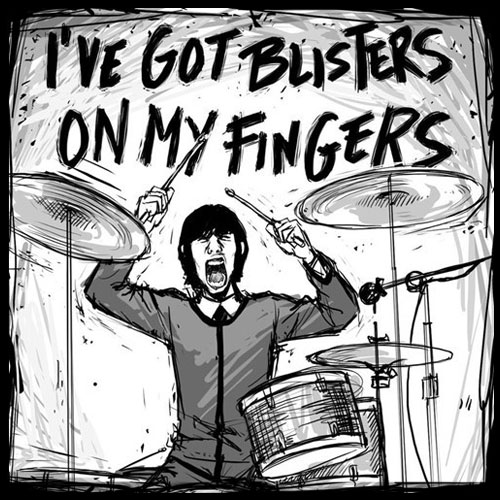
Initially recorded as a series of extended, slinky, blues-inspired jams in July 1968 (the unreleased 27-minute third take achieved legendary status among fans), by the time the recorded the album version on the night of September 9 with 21-year-old assistant producer Chris Thomas at the helm in place of an absent George Martin, “Helter Skelter” had morphed into a full-throttle rocker. No fewer than 18 takes were recorded that evening, with the last one making the cut. The sweat, the blood, and that uneasy balance between adrenalin-fueled mayhem and late-night fatigue is all palpable throughout the song’s four and a half minutes.
That jarring staccato riff kicks it off, more dissonant than any other Beatles track prior, McCartney joining in with his famous first line, playfully referencing the children’s spiral slide (“When I get to the bottom I go back to the top of the slide”), his voice ascending ominously (“When I stop and I turn and I go for a ride / Till I get to the bottom”) as Starr adds nervous snare beats, McCartney then exploding into a maniacal, out-of- scream: ”Till I see you AGAIN!” On that cue, the entire launches into an absolutely vicious groove, McCartney and Harrison on guitar, Lennon providing a thick line, as McCartney continues with one of his greatest vocal performances, his voice ragged and hoarse, underscored by the famous descending seven-note riff in the chorus. And like a bunch of precocious kids fooling around while the headmaster’s away, Lennon and assistant Mal Evans add some hilariously amateurish saxophone and trumpet respectively during the outro, which fades out, in, out, and back in again, in time for us to hear Starr add three exhausted cymbal crashes, fling his drumsticks, and let out his infamous exclamation.
The ambiguity of the title works brilliantly throughout the song. Is it about a person’s descent into madness? The dizzying temptation of pure, physical lust? Or just about a kid playing on a slide? On the other hand, a creepy little dude in California named Charles Manson had other ideas what the song was about, and after the grisly events of August 8 and 9, 1969, “Helter Skelter” would gain more notoriety than McCartney and the Beatles had ever intended. But in the end, the song far outlasted that controversy, with many prominent artists recording covers, and while U2’s obnoxious 1988 rendition is arguably the most famous, Siouxie and the Banshees’ feral 1978 interpretation, Mötley Crüe’s pulverizing 1983 cover, and Hüsker Dü’s cacophonous 1986 deconstruction actually come closest to equaling the pure, raw, inimitable power of the original.
—Adrien Begrand
7. Long, Long, Long
Primary Songwriter: Harrison
Following McCartney’s twisted, gas-guzzling, heavy metal-incarnate Helter Skelter, Harrison, in an underhandedness that befits his moniker as the quiet Beatle, takes the stage: “It’s been a looong, long, long time.” Floating in from the ethereal netherworld, the Harrison of Long, Long, Long is a spiritually exhausted disciple, quietly singing the praises of a higher being after having fumbled through countless dark years seeking enlightenment.
Almost haiku-like in its exultation, hardly any of the words are more than a syllable long.
Following McCartney’s twisted, gas-guzzling, heavy metal-incarnate Helter Skelter, Harrison, in an underhandedness that befits his moniker as the quiet Beatle, takes the stage: “It’s been a looong, long, long time.” Floating in from the ethereal netherworld, the Harrison of Long, Long, Long is a spiritually exhausted disciple, quietly singing the praises of a higher being after having fumbled through countless dark years seeking enlightenment.
Almost haiku-like in its exultation, hardly any of the words are more than a syllable long.
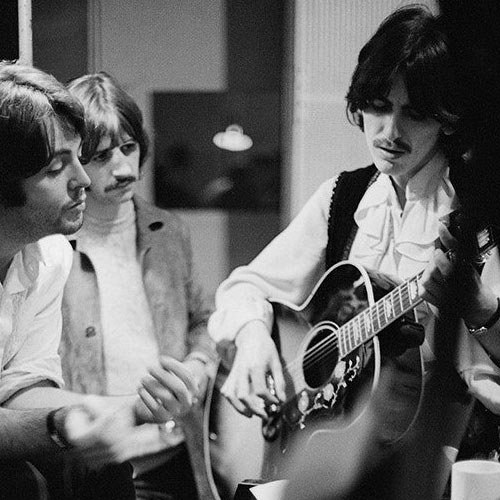
Each verse has a first line of seven syllables, followed by a second line of eight, then a final phrase of four. Despite its lyrical directness, however, Long, Long, Long is more than anything a subtle number. Subtle meant bad in 1968, the year of Jimi Hendrix’s Axis: Bold as Love, Cream’s Wheels of Fire, and the Velvet Underground’s White Light/White Heat. Yet with careful nurturing and repeated listens, Long, Long, Long is unveiled as one of Harrison’s most supremely refined songs with the Beatles, and a gem on the White Album.
Harrison’s contributions to the Beatles from 1965-1968 reflected his preoccupation with Hindu philosophy and Indian , which culminated in his taking up the sitar and leading his bandmates to India for a period of meditation in early 1968. Returning from the upper echelons of 1967’s Sgt. Pepper’s Lonely Hearts Club , The Beatles (among other things) heralded the group’s return to rock. For Long, Long, Long, this meant the ideal marriage of Harrison’s firm inner beliefs with the traditional instrumentation of rock ‘n’ —in the track, one can hear the blueprint for his entire solo career.
To understand the spare beauty of Long, Long, Long, it is even more important to grasp the chaos and conditions that gave birth to it. The Beatles was the ’s opportunity to project its growing dysfunction and disassociation with the world at large back upon it. Giving up touring in 1966 had the effect of confining the to a shell at Abbey Studios, in the company of only themselves and an elite inner circle, working through nights to record their double LP. Yet reports from this time generally agree on the fact that the group were not getting on particularly well; Mojo magazine’s anniversary edition of this album sensationally labels it the album that tore them apart! Out of this disassociation, eccentricity, and tension emerged, in this writer’s mind, the best collection of songs the Beatles ever put to vinyl. Many disagree. But what no one can deny is that unease is reflected in The Beatles’ unlike perhaps any other album before or after it: it captures the dark underbelly of the ‘60s before the Rolling Stones ever did.
Not that you would know it, listening to Long, Long, Long. The elusive hymn begins in the key of F major, yet introduces its verses in a chord away from the tonic, mirroring Harrison’s sense of “so many tears [spent] searching”. It grows from a lone, ponderous guitar to the ethereal billow of a Hammond organ that distorts and shades and provides an eerie cloak for his voice. Ascending to a surging bridge, the song waltzes on jazzy ninth-chords, clumping drum fills coloring the anxious harmonies: “Oh, oh, oh!” With that, the song finally reaches its yearned-for climax, dying away. Then Harrison resumes an absolute outpouring of worship: “How can I ever misplace you? / How I want you / Oh I love you.”
Long, Long, Long finishes on what the late, great Beatles scholar Ian MacDonald describes as “the luckiest accident in any Beatles recording”: a wine bottle in the studio that would rattle when certain notes were played on the organ, providing the backdrop for a dissonant guitar scratch, an anguished, out-of-body wail, and a final conclusion through a thundering drum . This majestic complexity of a conclusion, he continues, signifies “death, a new beginning, and an enigmatic question”. It also shrouds the song in unearthly mystique, touching the avant-garde and the spiritual, closing The Beatles‘ third side with a graceful shudder.
Contrary to what one would expect given the song’s heavily theological overtones, the song was not written during the group’s retreat in India but from the studio. Contrasting this with Harrison’s bitter Not Guilty, also from these sessions, or even the manic charge of the track before it (a sequencing that must have provoked some chuckling when the album was being assembled), Long, Long, Long proves that the key to transcendence through is a clear head and peace at the end of a long search. It is a gift of the sublime.
—Andrew Blackie




